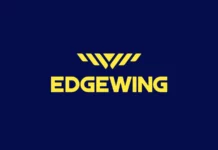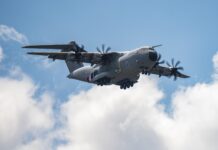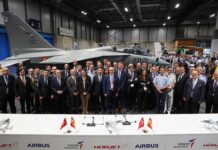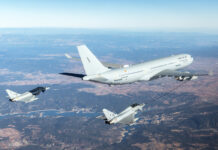The UK is to acquire a new helicopter type under the New Medium Helicopter (NMH) programme.
The selected helicopter will be operated by the British Army and the Royal Air Force (RAF) under the auspices of Joint Helicopter Command. The official contract notification states that the MoD “is considering the procurement of up to 44 New Medium Helicopters to replace existing rotorcraft systems for Army and Strategic Commands. The scope of the contract will also include the provision of training capabilities and a maintenance/spares package as well as design organisation scope.”
NMH Purpose
The objective behind the NMH programme (Project 702091450) is to “rationalise its existing multiple rotary wing requirements into one platform-type, maximising commonality in order to improve efficiency and operational flexibility. NMH will provide a common medium lift multi-role helicopter, fitted for, but not with, specialist Mission Role Equipment (MRE) and able to operate in all environments in support of defence tasks.” Potential contract value for the NMH programme is in the range of £900M to £1Bn, and as previously stated, the number of helicopters to be acquired is up to 44. However, when the MoD started exploring NMH possibilities in November 2021, the number of helicopters to be acquired was between 36 and 44.
The NMH will replace:
- the current RAF fleet of 23 PUMA HC2 helicopters (17 in service)
- the Army fleet of five Bell 212 helicopters based in Brunei (these currently have an out-of-service date of Quarter 3, 2022)
- the Army fleet of three Bell GRIFFIN HAR2 helicopters based in Cyprus (these currently have an out-of-service date of Quarter 2, 2023)
- the AS365N3 DAUPHIN II, six of which are used by 658 Squadron Army Air Corps (AAC) as part of the Joint Special Forces Aviation Wing
Contenders
Initial industry responses to the MoD regarding the NMH programme were expected in June and it was assumed that four options would emerge as contenders for NMH. These were:
- Airbus Helicopters with the H175M
- Bell with the Bell 525 RELENTLESS
- Leonardo with the AW149
- Sikorsky with BLACK HAWK
Thus far, only Airbus Helicopters and Leonardo have committed to manufacture or final assembly in the UK.
Back in 2021, Airbus Helicopters announced that their NMH proposal would include manufacture of the H175M helicopter at the Airbus site at Broughton in North Wales. Broughton is the major site of wing manufacture for Airbus commercial aircraft, it also has the infrastructure to support the rapid establishment of H175M production. Should the H175M win the NMH programme then the helicopter would also be offered into military export markets and any resulting sales would be built at Broughton. According to Airbus, they are the second largest private-sector employer in Wales, added to which Airbus has numerous sites around Britain that also make an important economic contribution. NMH is as much about politics and economics, as it is about selecting a superior military helicopter.
Competing Offers
Leonardo is another company with a strong presence in Britain, employing some 7,500 personnel across seven UK sites and they make a £1.9Bn contribution to the UK economy on an annual basis according to the company. Currently, aerostructures for the AW149 are manufactured in Brindisi, while the AW149 is assembled at Vergiate in Italy. If Leonardo win NMH they have committed to establishing an additional AW149 final assembly line at Yeovil, in addition the advanced aerostructures techniques that are needed to assemble the AW149 will allow the Yeovil site to participate in next generation helicopter programmes. Yeovil, is regarded by many as the helicopter centre of Britain, as this was the location of Westland Helicopters, a legacy company of Leonardo.
Although Airbus Helicopters and Leonardo would inevitably be seen as the top two contenders for NMH, if Sikorsky or Bell can craft a proposal that is politically and economically attractive they cannot be ruled out. On the other hand, what must concern the British government is that they will most probably have to choose between Broughton and Yeovil when they select an NMH winner. Then the concern is what would be the fate of the losing site, how serious would the economic and employment implications be? Although NMH might not be the biggest helicopter programme in the world, with a contract value of £1Bn (€1.17Bn) it is certainly a very attractive programme and will be one that each of the four contenders will want to win.
Sidney Dean







![Air-to-ground precision munitions: A market overview A SPEAR 3 test missile strikes its target during the first live fire test on 17 November 2024. [Crown Copyright 2024]](https://euro-sd.com/wp-content/uploads/2025/06/SPEAR_mini-cruise_missile_first_guided_firing__MBDA_2-Kopie-218x150.jpg)





